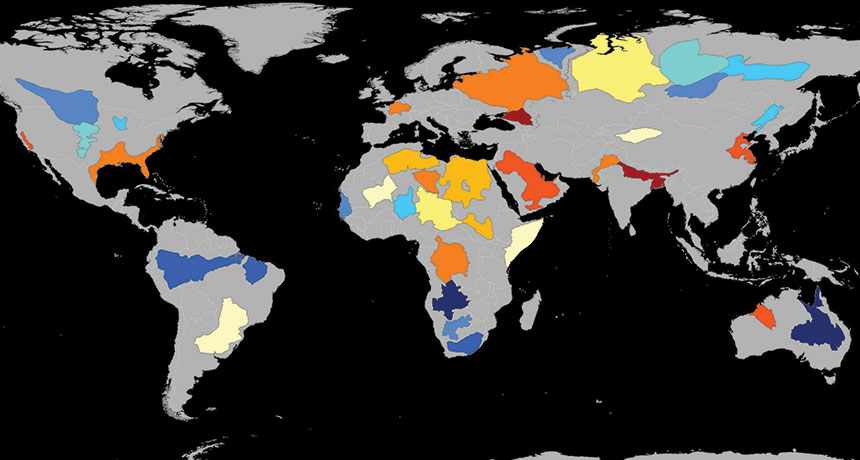Many of Earth’s groundwater basins run deficits
Consumption exceeds replenishment for majority of largest aquifers

DRYING OUT Twenty-one of Earth’s 37 largest aquifers are dwindling, satellite data show. Redder regions represent overstressed aquifers that lose more water each year than they take in.
UC Irvine, NASA






